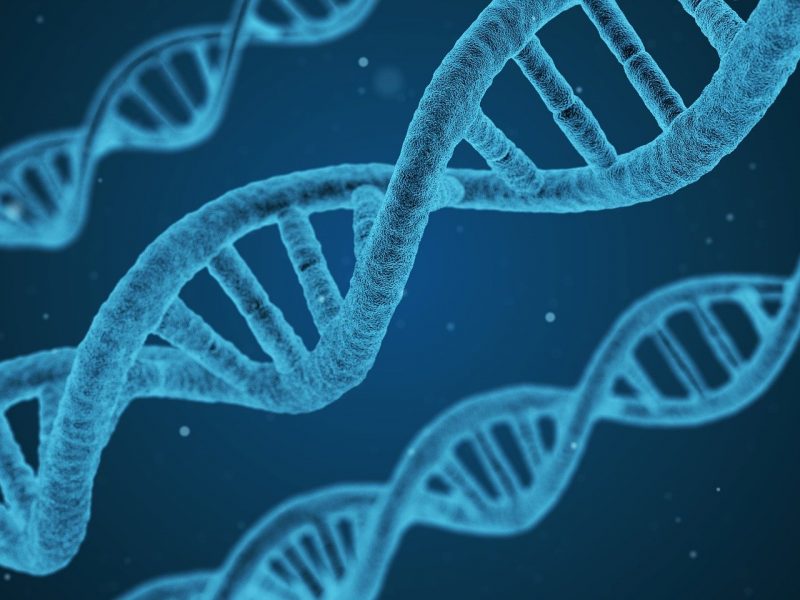Heather Dawn: Godfrey. P.G.C.E., B.Sc. (Joint Hon)
To support the following information and for deeper detail about how essential oils work with the body, please refer to my books Healing with Essential Oils, Essential Oils for the Whole Body and Essential Oils for Mindfulness and Meditation.
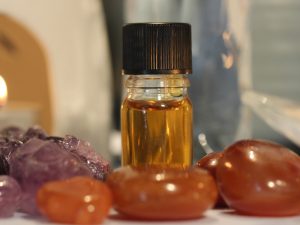 Essential Oils
Essential Oils
Essential oils are natural, volatile, chemical extracts taken from scented plants (leaves, flowers, fruits, woods, and roots). Our bodies are biologically programmed to react to essential oil constituents (Tisserand 2020). Essential oil molecules interact with various receptor sites, neuro-chemicals and enzymes within the body.
The therapeutic action of essential oils is well evidenced, especially in relation to microbial balance and pathogenic staving, wound healing and skin care, pain management, anxiety, depression, agitation, insomnia, mental alertness and memory. As such, essential oils can, and do, provide significant integrative contribution to health, wellness and wellbeing.
How may essential oils stave coronavirus symptoms and prevent infection?
COVID 19 is regarded as a novel, easily transmittable, coronavirus. Symptoms of infection are reported to range from non-detectible (that is, asymptomatic), mild to severe. Detectable indications include, among other ‘flu-like symptoms, a high temperature, persistent dry cough, and difficulty breathing.
Most people infected with Covid-19 are apparently asymptomatic, or exhibit only mild symptoms. In either case, infection does not last long – symptoms usually ease within five to seven days. In some cases, particularly in the presence of underlying serious or long-standing chronic health conditions, weakened or chemically suppressed immune system function, recovery may take longer. In some instances infection may progress from nose and airways to the lungs. If infection reaches the lungs, this usually means there is a ‘high viral load’ (rapid proliferation of replicating viral particles), with increased severity and seriousness of illness that may be life-threatening.
Virus particles are believed to highjack alveoli cells. The virus particles continue to replicate within the cell, eventually causing the cell to burst. Efficient lung function and breathing is consequently impeded. Fluid builds up in the lungs (pneumonia). Compromised gaseous exchange (oxygen and CO2) in the lungs in turn detrimentally affects cellular respiration throughout the body, with dire consequence to tissues and organs. No longer distinguishing between body cells and invasive pathogens, the whole immune system is activated (antigens, antigen-presenting cells, T and B lymphocytes, messenger molecules, cytokines, chemokines and their receptors, and signalling and co-stimulatory molecules), causing unregulated systemic inflammation. The immune system goes into overdrive – the body begins to attack itself, destroying cells, tissues and organs.
There are three identified phases of infection:
Phase 1 – early infection, where mild symptoms may occur that are similar to colds and ‘flu; infection remains in the nose and throat.
Phase 2 – pulmonary infection, which produces respiratory symptoms, such as persistent cough, shortness of breath and low oxygen levels; blood clots may be produce at this phase.
Phase 3 – hyper-inflammation stage, which occurs when hyperactivity of the immune system is sustained – at this stage the immune system may begin to attack and injure other vital organs, such as the heart and kidneys, and the body’s own tissues (a cytokine storm).
Prevention and treatment.
A healthy immune system is vital to resilience. It makes sense, therefore, as a foundation, to continuously support and boost the immune system in every day life (healthy diet, exercise, fresh air and so on, additional minerals and vitamins, such as, zinc, vitamins D and C, among others, to support healthy systemic function of the body).
Once infected with COVID-19 (or any pathogen) Shi et al (2020) suggest deliberate and immediate boosting of the immune system during the initial infection phase, and during the onset of the second stage of infection (as above), when there is potential that spread of the infection can be contained, curtailed and reversed. However, they warn, the immune system should be suppressed during the hyper-inflammatory phase; at this stage oxygen uptake and gaseous exchange and the lungs ability to remove waste and mucous is critically compromised.
NB: Essential oils should NOT be applied during the hyper-inflammatory third stage of infection because the compromised function of the alveoli and inhibition of gaseous exchange means that essential oil molecules are not absorbed or excreted efficiently and may cause further irritation and exacerbate symptoms.
Existing drugs and protocols, such as small amounts of hydroxychloroquine, zinc and vitamins, are shown to successfully inhibit coronavirus infection during the early stage (Cahill 2021). Vitamin C, for example, applied to COVID-19 patients in Wuhan and New York hospitals, demonstrated efficacy in staving infection (Zuo 2020, Hemila 2003). High doses of vitamin C modify susceptibility to various bacterial and virus infections and proliferation. Vitamin D3 offers yet another avenue of potential support. Vitamin D regenerates endothelial lining in blood vessels and is shown to minimise alveolar damage (Kakodkar et al 2020). Also, vitamin B3, which is highly lung protective, could be used at the onset of coughing (Shi et al 2020), also vitamin A, which helps the lungs, heart, and kidneys, and other organs, function properly (Ayyadurai 2020).
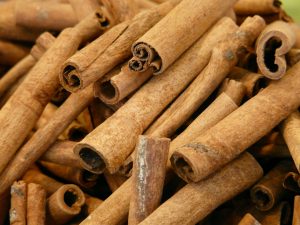
Essential oils
While essential oils should definitely not be applied during the third stage of coronavirus infection (progression from the respiratory tract to the lungs), they may generally and usefully be applied preventatively, utilising their anti-microbial properties, and to quell symptoms post infection, during the early phases of infection (headaches, nasal and sinus congestion, muscle aches, insomnia, depression and anxiety, and other cold and ‘flu-like symptoms). Essential oils also support hygiene.
Essential oils are generally and variously antiviral, antibacterial, anti-fungal, anti-inflammatory, mucolytic, and more. Some essential oils possess broad-spectrum bactericidal and anti-viral qualities, while others are more specific in their action (broad-spectrum in this context does not mean a single essential oil or blend of essential oils will kill all viruses or all bacteria). In truth, the effectiveness of essential oils depends on many things. For example, accurate targeting or honing of a specific essential oil, or blend of essential oils, according to its chemical composition, in accordance with the type of microbe or viral particle, the area of the body infected, the underlying health condition of the infected person, and so on. Also to consider, the authenticity, integrity, age and storage condition of an essential oil at the time of its use will influence its effectiveness.
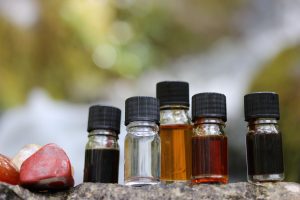
Essential oils instigate psycho-emotional responses too, that indirectly support the immune system. For example, instilling a sense of feeling peaceful and calm, uplifted and grounded, creates an optimal sympathetic nervous state that supports effective and efficient immune system function. In deed, feeling happy, relaxed, calm, positive and optimistic demonstrably positively influences physical function; heart rate, blood pressure, cortisol levels, endorphin release, digestion, and so on. Thus, our state of ‘being’ is very significant in terms of our resilience too– for example ‘being in stress’ or being in equanimity’, ‘being in fear’ or ‘being in peace’. Indeed, we are often reminded that unconditional love is an optimum state of ‘being’.
Some of the most potent anti-microbial essential oils include, among many others:
Cinnamon bark and leaf
Clove bud and leaf
Eucalyptus globulus
Pine
Tea Tree
The above essential oils must be applied with caution, however, as they are potential skin and mucous membrane irritants – this is one reason why it is important to check and identify the properties and qualities of an essential oil before applying it. For more information about the anti-viral and antimicrobial properties of essential oils, and their safe use and application, please refer to my books Healing with Essential Oils. Essential Oils for the Whole Body and Essential Oils for Mindfulness and Meditation and my article Essential Oils to Aid Post-Viral Recovery of Loss of Sense of Smell
Summary
Essential oils are valued for their preventative and supportive properties (for example, anti-microbial, anti-inflammatory and tissue regeneration, psycho-emotional influences, and much more), and may be used preventatively and during the early stages of an infection. Some essential oils posses broad spectrum antibiotic-like qualities and actions, while others may be more specifically targeted in terms of their actions. Good understanding of an essential oils individual anti-microbial components, also the nature and behaviour of pathogens (for example, how they infiltrate and affect the body) will enable effective honing and safe application.
General Guidelines for Safe Use
If symptoms are persistent, unexplained, or you feel generally unwell, you are advised to seek medical advice from a certified healthcare professional.
If essential oils are used frequently, for whatever reason (in beauty products, as perfumes, for minor conditions, for relaxation, and so on), then regularly change the oil or blend of essential oils you use (there are numerous essential oils with similar qualities, so alternatives are available) and have a break from use every so often. This will reduce the risk of sensitisation.
Add up to 15 to 20 drops of essential oil to a hand sanitizer (non-perfumed liquid soap dispenser). Do not add essential oils to an antibacterial sanitizer or pre-scented sanitizer (it is not necessary, and avoids risk of irritation). Soap, itself, is antibacterial – soap and water (careful hand washing and drying) are usually sufficiently effective.
Do not diffuse irritating essential oils in public spaces or too close to other people; always check the properties of an essential oil, and also always check with other people you share a space with before diffusing essential oils.
Do not apply essential oils neat; always dilute essential oils in an emollient (for example, vegetable oil, cream or lotion) when applying them to skin – add 2-3 drops to 6 ml of vegetable oil, non-perfumed lotion, cream, or ointment.
Do not take any essential oils internally.
Babies, children, people who are asthmatic or have other pre-existing respiratory conditions, or very elderly or frail, are especially vulnerable in terms of sensitisation and potential irritancy of their airways when exposed to essential oil vapours. Do not apply essential oils to babies and children under three years old
Meanwhile, you will find useful information about essential oils and how to apply them safely and effectively, here:
Measuring Essential Oils for Personal Application
Key terms
Bacterial – a substance that kills bacteria. Bactericides are disinfectants, antiseptics or antibiotics
Bacteriostatic – prevents the growth of bacteria
Anti-viral – effective against viruses, do not destroy pathogens but inhibit their growth
Virucidal – deactivates or destroys viruses
Antimicrobial – active against microbes
Microbes – a microorganism, especially a bacterium causing disease or fermentation
Germs – a microorganism, especially one that causes disease
My books (Published by Inner Traditions, Vermont USA) provide comprehensive detail about essential oils and provide very useful sources of reference for anyone wishing to use essential oils safely and effectively. You can purchase these books from most online or high street bookshops:
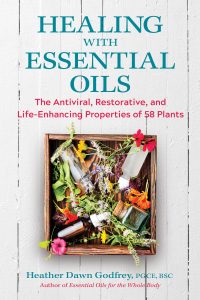
Essential Oils for the Whole Body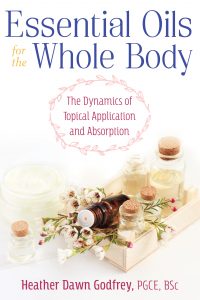
Essential Oils for Mindfulness and Meditation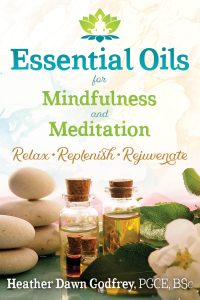
Reference
- Tisserand, R (2020) https://roberttisserand.com/essential-oils
- Shi, Y., Wang, Y., Shao, C. et al.COVID-19 infection: the perspectives on immune responses. Cell Death Differ(2020). https://doi.org/10.1038/s41418-020-0530-3 https://www.nature.com/articles/s41418-020-0530-3
- Zuo, M (2020) Vitamin C deployed in big doses to help treat coronavirus patients. Southern China Morning Post, China/Society 28th March 2020. https://www.scmp.com/news/china/society/article/3077341/vitamin-c-deployed-big-doses-help-treat-coronavirus-patients
- Hemila, H. (2003) Vitamin C and SARS coronavirus; Journal of Antimicrob Chemother, 56:6 p1049-1050. https://www.ncbi.nlm.nih.gov/pmc/articles/PMC7110025/
- Cahill, D. (2021) Professor Cahill on the dangers of vaccines and lockdowns. Bitchute. https://www.bitchute.com/video/HjUpZxubZN1V/
- Kakodkar, P., Kaka, N., Baig, M. N. (2020) A Comprehensive Literature review on the Clinical Presentation, and Management of the Pandemic Coronovirus Disease 2019 (COVI-19). 12th April, 12(4): e7560. https://www.ncbi.nlm.gov/pmc/articles/PMC7138423
- Ayyadurai, S., Dr. MIT PhD (2020) Coronavirus is the right time to discuss immune health: You Tube https://www.youtube.com/watch?v=lzC59WiW_Fs&feature=youtu.be
Bibliography
- Almeida, L.F., Paula, J.F., Almeida, R.V., Williams, D.W., Hebling, J., Cavalcanti, Y.W.; Efficacy of citronella and cinnamon essential oil on candida albicans biofilms; Acta Odontol Scand 2016 Jul: 74(5): p 393-8; PubMed
- Alves-Silva, J.M., Zuzarte, M., Goncalves, M.J., Cavaleiro, C., Cruz, M. T., Cardoso, S.M., Salqueiro, L.; New Claims for Wild Carrot (Daucus carota carota) Essential Oil; Evidence Based Complementary and Alternative Medicine 2016; 2016: 9045196, PubMed
- Becker, S. PhD (2018) Essential Oils to prevent the spread of flu. Tisserand Institute: https://tisserandinstitute.org/essential-oils-flu/
- Becker, S., PhD RA (2020) Essential Oils and Coronovirus. The Tisserand Institute. https://tisserandinstitute.org/essential-oils-coronavirus/
- Brower, V. (2004) When the Immune System goes on the Attack. EMBO Rep. Science and Society 5(8) p757-760. https://www.ncbi.nlm.nih.gov/pmc/articles/PMC1299128/
- Garozzo, A., Timpanaro, R., Bisignano, G., Castro, A. (2009) In vitro antiviral activity of Melaleuca alternifolia essential oil: Society for Applied Microbiology. https://sfamjournals.onlinelibrary.wiley.com/doi/full/10.1111/j.1472-765X.2009.02740.x
- Kavanaugh, N.L., Riggeck, K., Selected Antimicrobial Essential Oils Eradicate Pseudomonas spp and Staphylococcus aureus Biofilms: Applied and Environmental Microbiology 2012 78(11): p 4057-4061, American Society for Microbiology: ncbi.nim.nih.gov
- Kokodkar, P., Kaka, N., Baig, M. N. (2020) A Comprehensive Literature review on the Clinical Presentation, and Management of the Pandemic Coronovirus Disease 2019 (COVI-19). 12th April, 12(4): e7560. https://www.ncbi.nlm.gov/pmc/articles/PMC7138423
- Nunez, L., Aquino, M.D.; Microbicide activity of clove essential oil (Eugenia caryphylleta); Brazilian Journal of Microbiology 2012 Oct-Dec; 43(4): p 1255-1260
- Ooi, L.S., Li, Y., Kam, S.L., Wang, H., Wong, E.Y., Ooi, V.E.; Anti microbial activities of cinnamon oil and cinnamaldehyde from the Chinese medicinal herb Cinnamomum cassie Blume; Am J Chin Med 2006; 34(3): p 511-22. https://libpaper.jnu.edu.cn/papers/browse/browsePaInfo.action;jsessionid=C5143518B4CE3C82D0E099C3A0C653F4?id=2962
- Radha G., Chandi, C.R., Dash, S.K., Mishra, R.K.; In vitro antimicrobial potential assessment of carrot and celery seed essential oils against 21 bacteria; Journal of Essential Oil Bearing Plants, 2004, vol 7 issue 1 p 79-86
- Sharifi-Rad, J., Sureda, A., Tenore, G.C., Daglia, M., Sharifi-Rad, M., Valussi, M., Tundis, R., Sharifi-Rad, Ma., Koizzo, M.R., Ademiluyi, A.D., Sharifi-Rad, R., Ayatollahi, S.A., Iriti, M.; Biological Activities of Essential Oils: From Plant Chemoecology to Traditional Healing Systems: Molecules 2017 Jan; 22(1): 70 Published online 2017 Jan 1.doi: 10.3390/molecules22010070 PubMed
- Swamy, M.K., Akhtar, M.J., Simon, U.R.; Anti Microbial Activity of Six Essential Oils Against Human Pathogens and Their Mode of Action (an updated review); Evidenced Based Complementary and Alternative Medicine 2006; 2016:3012462
- Varga A., Acimo, M., Starkouic J., Cvetkovic, M.; Anti microbial properties of essential oils from wild and cultivated carrot seed; (Conference Paper) 2016: Research Gate
- Wang, H., Song., L., Ju, W., Wang, X., Dong, L., Zhang, Y., Ya, P., Yang, C., Li, F. (2017) The acute airway inflammation induced by PM2.5 exposure and the treatment of essential oils in Balb/c mice. Scientific Reports. 7:44256. https://www.ncbi.nlm.gov./pmc/articles/PMC5343586/
- Wei, L.S., Wee, W., Chemical composition and anti microbial activity of citronella essential oil against systemic bacteria of aquatic animals; Iran Journal of Microbiology 2013 Jun: 5(2): p 147-152; PubMed PMC 3696851
- Bowles, J. E. (2000) The Basic Chemistry of Aromatherapeutic Essential Oils: E. J Bowles, Sidney, Australia
- Clarke, S. (2002) Essential Chemistry for Safe Aromatherapy: Churchill Livingstone, Edinburgh
- Godfrey, H. D. (2019) Essential Oils for the Whole Body: The dynamics of topical application: Healing Arts Press, Rochester, Vermont USA
- Svoboda, K. P., Svoboda, T. G. (2000) Secretory Structures of Aromatic and Medicinal Plants: A review and atlas of micrographs: Microscopix Publications, Powys UK
- Tisserand, R., Young, R. (2014) Essential Oil Safety: A guide for Health Care Professionals 2nd ed: Churchill Livingstone, Elsevier, Edinburgh
- Valnet, Dr. J. (1980) The Practice of Aromatherapy: C.W. Daniel Co. Ltd., Saffron Walden UK
- Vasey, C. (2018) Natural Antibiotics and Antivirals: 18 Infection-Fighting Herbs and Essential Oils: Healing Arts Press, Rochester, Vermont USA
- Williams, D. G. Williams (2006) The Chemistry of Essential Oils: an introduction for aromatherapists, beauticians, retailers, and students: Micelle Press, Dorset England


